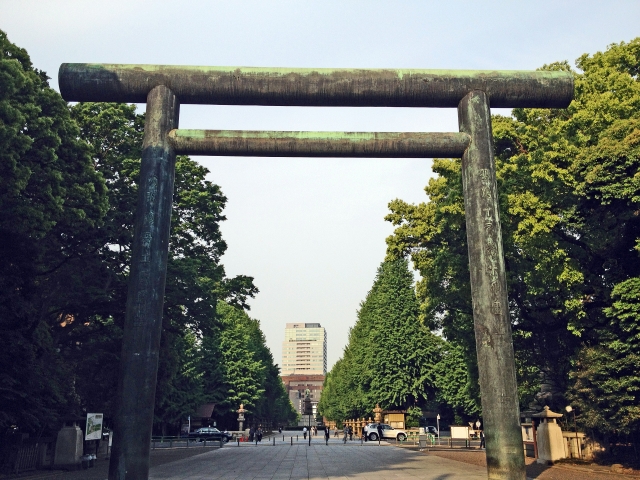It’s not always that we touch on religious subjects, but felt like there is a need to, since this particular region has quite a big influence on the Japanese culture and tradition. This particular religion that we are going to talk about is Shintoism. I am pretty sure that you have heard of it. I might also be right to say that many people including me thinks that it looks rather similar to Buddhism. Well in some ways, it does, but it is different. We’ll take a brief overview first of what the religion is all about, and we will also touch on the core beliefs and shrines. We won’t be covering everything of course, as it will take a really long article to do so. The main point here is to show how it is important in the Japanese culture.

Brief Introduction of Shintoism
If Japan’s major religions were likened to a tree, Shintoism would be its roots. Shinto, commonly defined as, ‘Japan’s indigenous religion’, is as old as Japan itself. Its roots and origins trace back to the latter part of the Stone Age, when it is said that the Japanese first began inhabiting the Japanese Islands. The ancient Japanese clan Yamato initially believed in Shinto only as a tribal religion but, as they grew in number, proceeded to propagate it as a means to establish and solidify their reign.
Since those ancient times, Shinto has been influenced by an influx of various religions into Japan from surrounding regions. The notable arrival of Buddhism into Japan in the 6th century CE had a significant impact on Shinto doctrine; thus, it was only to distinguish itself from Buddhism that the term Shinto was initially coined. Consequently, most Japanese (85 percent) culturally practice a mixture of Shintoism and Buddhism. Globally, up to 3 million people recognise themselves religiously as Shintoists and although Shinto rituals are still widely practiced throughout Japan, only a minority of Japanese identify exclusively with it. Nevertheless, Shinto beliefs and practices are firmly embedded in the civilisation of Japan and continue to remain an integral part of Japanese culture today.
Core Beliefs
Concept of Kami (God)
At the heart of Shinto ideology is the concept of the Kami, commonly defined as, ‘gods’ or ‘deities’. Heavenly deities, most notably the sun goddess Amaterasu Omikami, are primarily treated as Kami, but the wider scope of the concept also recognises objects of reverence to be acknowledged as objects of worship; such as illustrious ancestors, forces of nature, animals, and even rocks. The Kami are seen as beings who exhibit qualities of harmony and cooperation and who assist people in accomplishing their objectives. Thus, Shintoists seek and worship the respective Kami who are particular to their needs and wishes.
Creation Myth and Rituals
Shinto beliefs and rituals are founded mainly upon creation myths surrounding the birth and development of the sacred Japanese Islands. It is said that Izanagi and Izanami (Heaven and Earth) were a pair who gave birth to the Japanese Islands and various deities. The sun goddess Amaterasu was produced from the left eye of Izanagi and the moon god Tsuki Yomi from his right. The principles of progress and a harmonious life were understood through the actions of such Kami and, having perceived the existence of a life-force, ancient ancestors of the Japanese developed a sense of the functioning and blessings of the Kami. As such, they were deemed individually endowed with divinity and the ability to respond to prayer. Since these ancient times, offerings are presented to the Kami at Shinto shrines all throughout Japan and religious vows are taken in order to secure some natural benefit, or to give thanks for something already received.
Shrines
Today, people visit Shinto shrines at their own convenience but usually do so on occasions of rites and festivals, seeking blessings of the Kami. Various Shinto rites of passage are observed in Japan and at each occasion, beginning from birth up until marriage, shrines are visited to give thanks for the Kami’s protection and to pray for prosperity. The Japanese usually hold weddings in Shinto style and pronounce their wedding vows to the Kami. Each Shinto shrine also has several festivals throughout the year, which usually include purification rites, prayer, ritual music and dance, and feasts.
The most significant Shinto shrine in Japan is the Grand Shrine of Ise. It is the chief place of worship of the sun goddess Amaterasu.
Conclusion
Shintosim has forever been a part of the Japanese civilisation, so much so that a study of its development over thousands of years can rightfully be considered reflective of the history of Japan itself. It beautifully teaches its adherents a philosophy of morals that removes human evils and vices from the root. Shintoism is an optimistic faith and the fact that Shinto itself has endured the test of time in Japan defends and maintains this outlook.










